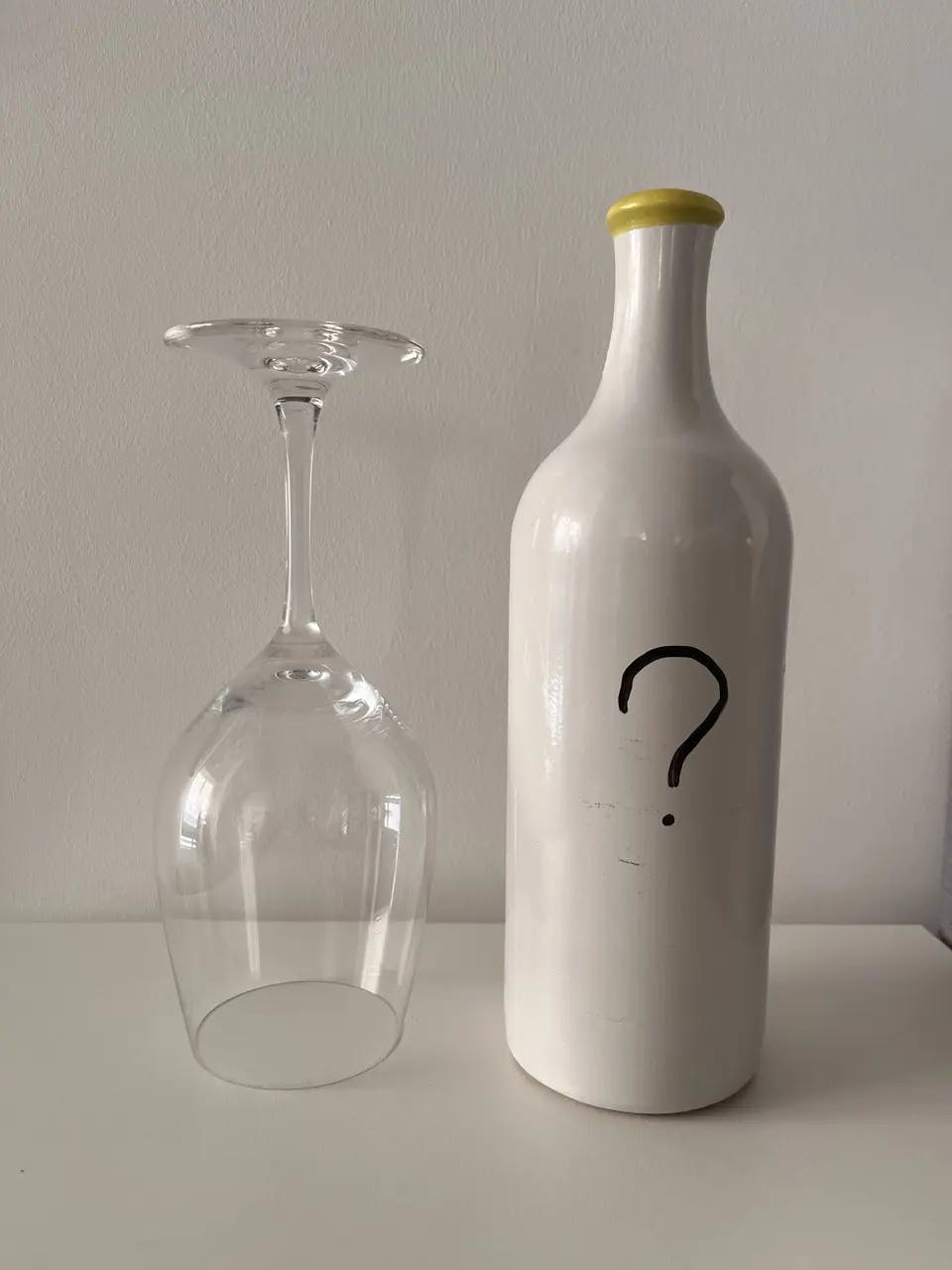Roses De Jeanne Val Vilaine VV/R22 2022
- Region
- France » Champagne » Champagne AOC » Côte des Bar
- Type
- white traditional sparkling, brut
- Producer
- Vintage
- 2022
- Disgorged
- 2024
- On lees
- 16 months
- Grapes
- Pinot Noir
- Alcohol
- 12.5
- Volume
- 750 mL
- Cellar
- 1 bottles
- Find at

- 1.5 hectare vineyard in the lieu-dit "Val Vilaine" consisting of 100% Pinot Noir. 40 year-old vines
- Bands of Kimmeridgian soil common to Chablis. The Côte des Bars is closer to Chablis than to Reims.
- Vineyards are farmed using organic methods and simple Guyot pruning is employed. Vines are planted at a density of 8000 vines per hectare.
- 1st press juice only, hand harvested and crushed by foot and fermented using indigenous yeast. Bottled unfined and unfiltered.
Ratings
Oh dear, it seems this wine and my palate haven't had their rendezvous yet. Maybe I was letting the wine breathe, or perhaps I was just taking another sip elsewhere. 😉
Fear not, dear wine enthusiast! This bottle's moment in the spotlight is coming soon. In the meantime, why not uncork your own adventure with it? After all, the best wine stories are those we create ourselves. Cheers to new tastings on the horizon! 🥂
About Producer
Roses de Jeanne is the project of Cédric Bouchard, who began bottling under this name in 2000 after a short career as a sommelier in Paris. He returned to his roots in the Côte des Bar, taking over a small plot of his father's vines near Celles-sur-Ource - and instead of following Champagne's traditional playbook, he rewrote it entirely.
No blending. No dosage. No compromise. Just one vineyard, one grape, one vintage - each time.
It might sound like dogma, but it's not. What Bouchard is chasing is clarity. His work in the vineyard is quiet and deliberate - organic farming, radically low yields, an insistence on perfect ripeness. In the cellar, he uses only the first press juice, lets native yeasts take the lead, and relies on a slow, cool second fermentation to shape the texture. Everything is done to preserve detail and nuance.
The wines aren't filtered through Champagne's usual layers of reserve wines and house style. They come straight from the place, vintage, and Bouchard's exacting vision.
He started small - just 1.37 hectares - and many of the wines remain painfully limited. But each cuvée is a distinct and articulate expression of its origin:
- Val Vilaine – 100% Pinot Noir from the lieu-dit of Val Vilaine. Often the most approachable in the range, though no less serious. 300–500 cases.
- Les Ursules – Also Pinot Noir, from a south-facing site on Kimmeridgian limestone. More structured, more brooding. First released in 2014.
- Côte de Bachelin [La Parcelle] – Single parcel Pinot Noir, aged three years on lees. Around 150 cases annually.
- Haute-Lemblée – Chardonnay from a chalky plot. Rare, mineral, hauntingly pure.
- Bolorée – Pinot Blanc. Yes, Pinot Blanc. From a site called La Bolorée. Textured and oddly timeless.
- Creux d'Enfer Rosé – Saignée rosé of Pinot Noir. The rarest wine in the cellar. Almost mythological in its scarcity.
These aren't showy wines. They don't sparkle conventionally. Instead, they hum with energy - tense, soil-driven, sometimes austere, always precise. They're not for everyone, and that's fine.
Bouchard himself suggests decanting them gently. I'd add - give them time, give them silence, and they'll tell you where they come from.